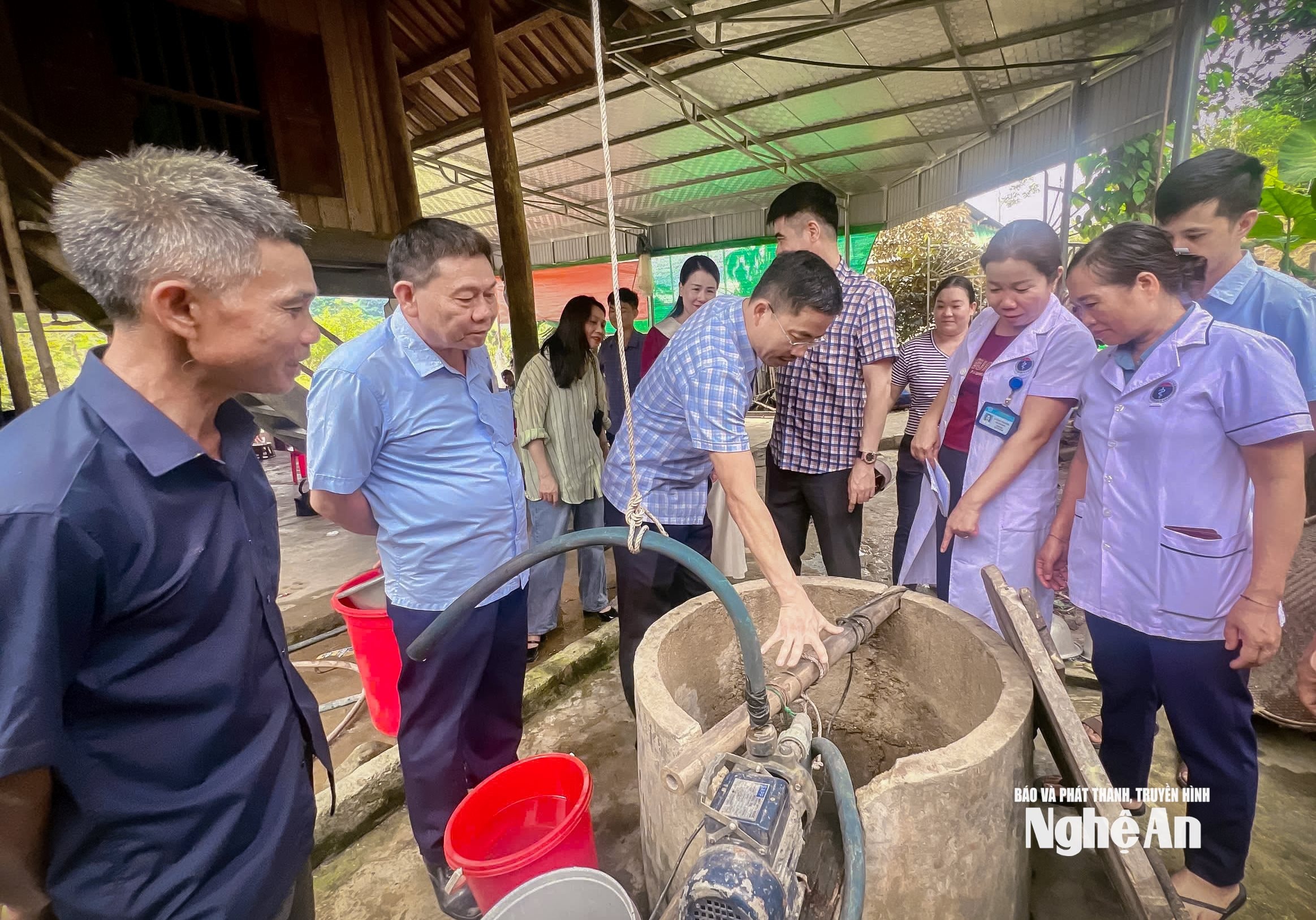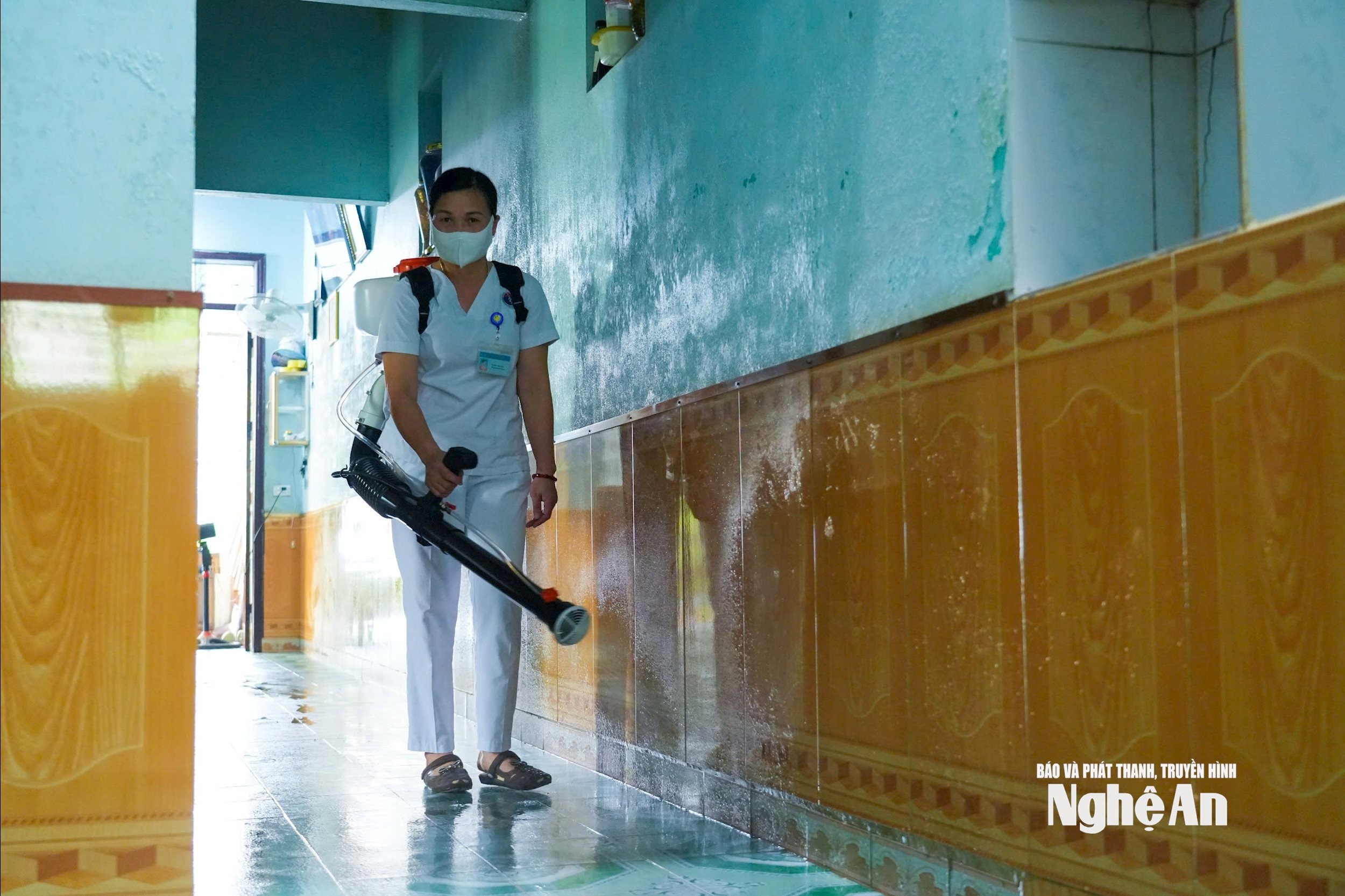Nghe An: Proactively clean the environment and prevent and control epidemics after storm No. 10
Due to the impact of storm No. 10 in Nghe An province, many localities have experienced severe flooding. This has affected domestic water sources, the environment, and the risk of infectious disease outbreaks.
No epidemic has appeared yet
To proactively prevent and combat epidemics after storm No. 10, Nghe An Department of Health has issued Official Dispatch No. 4266/SYT-NVY "on ensuring medical work after storm No. 10 and floods" to medical facilities in the province. The Department of Health requests: Medical facilities to closely monitor and respond to epidemics during storms, floods, and landslides; promptly detect and promptly handle infectious diseases at risk of outbreaks; localize and handle epidemics, and effectively coordinate with relevant units in protecting people's health and lives.
.jpg)
To support medical facilities in performing environmental sanitation and preventing infectious diseases after storm No. 10, Nghe An Department of Health established two working groups to flood-affected localities. The first working group, led by a Deputy Director of the Department of Health, supported the Medical Centers of Nghia Dan, Thai Hoa, Quy Hop and Quy Chau. The second working group, led by the Director of the Provincial Center for Disease Control, supported the Medical Centers of Nam Dan, Thanh Chuong, Tan Ky and Do Luong.

Two working groups visited health centers, health stations and households to inspect the situation, provide guidance on domestic water treatment, environmental sanitation and infectious disease prevention. At the same time, the two groups also provided additional Cloramine B and Aquatabs to severely flooded areas to treat water sources.
Carrying out the monitoring task, the two working groups also recognized that the medical centers and commune health stations were very proactive in prevention and control activities during and after the storm and flood season; proactively received supplies and chemicals and distributed them to affected people in a timely manner; promptly advised local authorities, guided and joined hands with the people to clean the environment, treat domestic water sources and closely monitor the epidemic situation during the rainy and flood season.

Dr. Chu Trong Trang - Director of the Provincial Center for Disease Control, Head of Working Group No. 2 of the Department of Health said: Up to now, the situation of infectious diseases in the localities affected by storms and floods is stable, no outbreaks of gastrointestinal diseases such as diarrhea, typhoid... Environmental sanitation work is being actively implemented by localities. The source of water for people's daily life is being well ensured.
Absolutely do not be subjective.
After the floods, Nghe An has not had any epidemics. However, localities, medical units and people should not be complacent. Dr. Chu Trong Trang stated: Local flooding in many localities will create favorable conditions for vector-borne diseases such as flies, mosquitoes, larvae, etc. to thrive. In particular, mosquitoes are the most common vector of malaria and dengue fever.

Flooding also causes a lack of clean water for daily use, affecting people's living environment. Contaminated water sources due to floods and polluted living environments increase the risk of outbreaks of diseases such as: Digestive tract diseases (diarrhea, cholera, dysentery, typhoid, etc.); skin diseases (foot rot, dermatitis, folliculitis, etc.); eye diseases (pink eye, trachoma).
To effectively prevent and control epidemics, all levels, localities and medical units need to step up information dissemination to all people about risk factors. Preventive and treatment medical work needs to be closely coordinated to promptly detect and diagnose infectious diseases causing epidemics in flood-affected areas. In addition, it is necessary to implement solutions to strengthen food hygiene and safety inspection, closely monitor food poisoning; mobilize people to implement food hygiene and safety measures, eat cooked food and drink boiled water.
For households with flooded wells, it is necessary to treat and clarify the water by using alum at a dose of 1g of alum (a piece about half the size of a finger joint) for 20 liters of water. Scoop a ladle of water, dissolve the amount of alum equivalent to the volume of water that needs to be clarified, put it in a jar, pot, jar, tray or water tank and stir well, wait about 30 minutes for the sediment to settle to the bottom, then decant the clear water. If there is no alum, use a clean cloth to filter the water, keeping the dirt, do this several times until the water is clear.
After clarification, it is necessary to disinfect with chemicals, specifically with Cloramin B or Aquatabs. One 0.25g Cloramin B tablet can disinfect 25 liters of water and one 0.67g Aquatabs tablet can disinfect 20 liters of clear water.
-7668202a173abd31eb2fa8764e69540c.jpg)
To prevent and combat epidemics after storms, people also need to pay attention to the treatment of feces and garbage. Environmental treatment follows the principle that as the water recedes, families clean their houses and mobilize the community to clean the environment; it is necessary to clear sewers, fill in stagnant water, bury dead animals and disinfect; wash hands with soap and clean water before eating and after cleaning... When detecting a disease, do not self-treat at home but go immediately to medical facilities for timely examination and treatment, to avoid spreading the disease to the community./.


